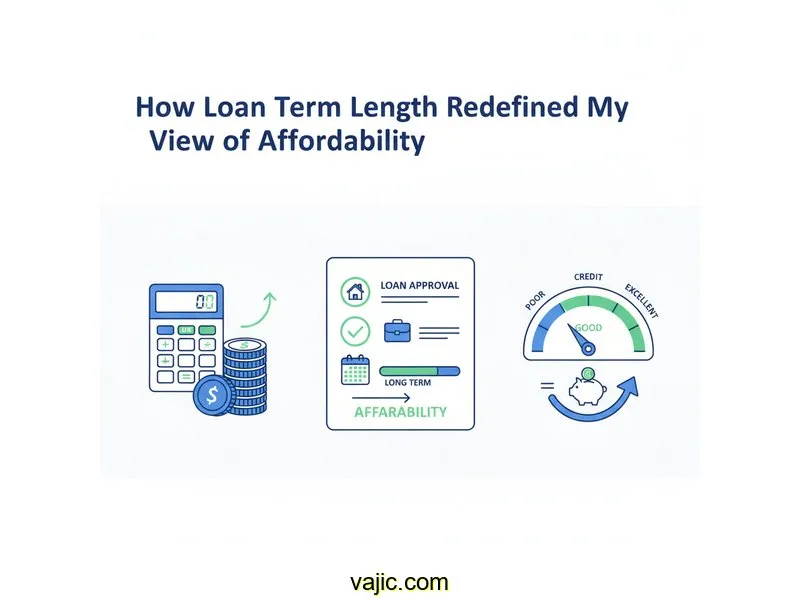
Auto Loan Calculator
Calculate payments over the life of your Loan
Home Blog Privacy Terms About Contact
Calculate payments over the life of your Loan
Home Blog Privacy Terms About ContactPublished on October 15, 2025

It all started with a simple conversation in the breakroom at work. A coworker was thrilled, explaining how they managed to get a car loan with a monthly payment that was surprisingly low. I was researching a potential loan for a home project at the time, for a similar amount, and my own initial calculations were showing much higher monthly figures. How was that possible? My mind started racing with questions. Was their interest rate just that much better? Did they put down a massive down payment?
When I casually asked about the term, they mentioned it was for six years. A lightbulb didn't go off right away; instead, a fog of confusion rolled in. I had been so hyper-focused on the monthly payment—that single, digestible number that fits into a budget. It felt like the most important piece of the puzzle. I assumed a lower payment was the ultimate goal, the sign of a "good deal." But the more I thought about it, the less sense it made. How could spreading out payments lead to anything but a better outcome?
That evening, I sat down with my laptop, determined to understand the mechanics behind this. I wasn't trying to make a financial decision or find the "best" loan. My goal was purely educational. I wanted to pull back the curtain on the math and see how different variables interacted. What was the hidden story that the monthly payment alone wasn't telling me? This is my journey of untangling that very question. It’s about understanding how the numbers work, not about providing any financial advice.

My first step was to find a standard online loan calculator. I decided to create a hypothetical scenario to test my understanding, using a round number to keep the math simple in my head. Let's say I needed a loan for $18,450 for my project. I found a representative interest rate online, something like 6.7%, and plugged it in.
For my first calculation, I chose a term I was comfortable with: 48 months, or four years. I entered the numbers: $18,450 for the loan amount, 6.7% for the rate, and 48 for the term. The calculator spit out the results almost instantly. The monthly payment was around $438.30. Alongside it, the calculator showed the total interest I would pay over the four years: $2,588.40. That seemed straightforward enough.
Then, I decided to replicate my coworker's situation. I kept the loan amount the same, $18,450. To make the comparison more realistic, I even nudged the interest rate up slightly to 7.2%, assuming a longer term might come with a less favorable rate. The key change was the term. I typed in 72 months. The new monthly payment appeared: $314.93. My initial reaction was, "Wow, that's so much lower!" It was over $120 less per month. For a moment, I understood my coworker's excitement. That lower figure felt like a huge win.
But then I stopped. My curiosity pushed me to look at the other numbers on the screen—the ones I had initially ignored. The calculator showed that with the 72-month term, the total interest paid would be $4,224.96. I stared at the screen for a solid minute. The monthly payment was lower, yes, but the total interest was nearly double. This was the contradiction that broke my brain. How could I be paying less each month but more—so much more—overall? I realized my focus on one number had blinded me to the complete picture. I wasn't just calculating wrong; I was thinking about the problem wrong entirely.
That moment of confusion was exactly what I needed. It forced me to stop taking the calculator's output at face value and start digging into the "why." I decided to create a systematic comparison, not just glancing at the results but truly analyzing them side-by-side. I opened a simple spreadsheet and laid out the two scenarios, treating it like a science experiment. My goal was to see the relationship between the numbers, not just the numbers themselves.
It was this deliberate, slow-paced comparison that led to my aha moment. The monthly payment isn't the story; it's just the first chapter. The real narrative is told through the interplay of time and interest. A longer term doesn't magically reduce the debt; it just gives you more time to pay it off. And for that extra time, you pay a price in the form of more interest payments. Every additional month is another opportunity for interest to accrue on your remaining balance. Suddenly, the math wasn't just numbers on a screen; it was a tangible concept of cost over time.
My first big lesson was seeing the loan term not as a passive timeline but as an active ingredient in the cost formula. Extending the term from 48 to 72 months didn't just add 24 months to the end; it fundamentally changed the structure of the entire repayment. With a longer timeline, the principal balance decreases more slowly. Since interest is calculated on the remaining balance, a slower reduction means you pay interest on a higher average balance for a longer period.
The second lesson was to re-frame my focus. The monthly payment is a budgeting tool, but the total interest paid is the scoreboard. It tells you, in plain dollars, the cost of borrowing that money. Seeing that the 72-month loan would cost me $1,636.56 more in interest than the 48-month loan was a stark, undeniable fact. It made me realize that "affordability" has two dimensions: what you can afford month-to-month, and what you can afford over the entire life of the loan.
To be sure I wasn't fooling myself, I ran a third test. I used the same $18,450 loan and 6.7% rate but set the term to 60 months (five years). The calculator showed a monthly payment of about $359.88 and total interest of $3,142.80. It fit perfectly into the pattern. The payment was lower than the 48-month option but higher than the 72-month one. The total interest was also right in the middle. This confirmed my new understanding: the term length acts like a lever, directly trading lower monthly payments for higher total costs.
This journey through online calculators was incredibly empowering. I went from being confused by a coworker's comment to feeling confident in my ability to interpret the numbers behind a loan. It wasn't about finding a "better" loan, but about understanding the mechanics so I could see the full picture. Here are the core lessons I took away about the calculations themselves:
Interest is calculated based on the outstanding principal balance. When you have a longer loan term, your monthly payments are smaller, which means the principal balance decreases more slowly. Because the balance stays higher for longer, more interest accrues over the life of the loan, leading to a higher total interest cost.
While every field is important, the "Total Interest Paid" reveals the true cost of borrowing. The "Monthly Payment" tells you about your monthly cash flow, but the total interest figure shows you the premium you are paying for the convenience of borrowing the money over a specific period.
An amortization schedule is a table that breaks down each loan payment into its principal and interest components. If you compare a 48-month schedule to a 72-month one, you will visually see that for the longer loan, a much larger portion of your payments in the first few years goes toward interest. This powerfully illustrates why longer loans cost more.
From a purely mathematical perspective, a good starting point is to use a calculator to model both scenarios and compare the "Total Interest Paid" for each. This gives you a clear, apples-to-apples number for the cost of borrowing, which you can then consider alongside the monthly payment's impact on your budget.
My biggest takeaway from this whole experience is that the story of a loan isn't told by a single number. The monthly payment, the interest rate, the term, and the total cost are all interconnected parts of a larger narrative. Focusing on just one piece, as I was doing initially, leads to a completely skewed understanding. The real clarity came when I learned to see how they all worked together.
Playing with online calculators, asking "what if," and changing one variable at a time transformed these abstract financial concepts into something concrete and understandable. It wasn't about becoming a math genius; it was about building confidence and financial literacy. I'd encourage anyone who feels intimidated by these topics to do the same. Don't focus on making a decision, just focus on understanding the mechanics. The confidence that comes from that knowledge is invaluable.
This article is about understanding calculations and using tools. For financial decisions, always consult a qualified financial professional.
Disclaimer: This article documents my personal journey learning about loan calculations and how to use financial calculators. This is educational content about understanding math and using tools—not financial advice. Actual loan terms, rates, and costs vary based on individual circumstances, creditworthiness, and lender policies. Calculator results are estimates for educational purposes. Always verify calculations with your lender and consult a qualified financial advisor before making any financial decisions.
